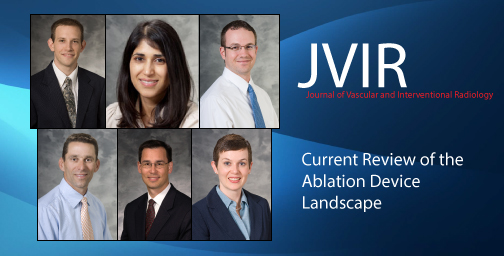
UW Tumor Ablation research is prominently featured in a review of ablation devices by the Journal of Vascular and Interventional Radiology (JVIR), as part of JVIR’s new Ablation Resource Center.
A paper by the UW Tumor Ablation Lab, “˜Percutaneous Microwave Ablation of Hepatocellular Carcinoma with a Gas-Cooled System: Initial Clinical Results with 107 Tumors,” made the front page of the review, highlighting the group’s development of a gas-cooled microwave (MW) ablation antenna. Authors include Department of Radiology’s Timothy J. Ziemlewicz, M.D, J. Louis Hinshaw, M.D., Meghan G. Lubner, M.D., Christopher L. Brace, Ph.D., Fred T. Lee Jr, M.D., and Marci Alexander, R.N., and Department of Medicine’s Parul Agarwal, M.D. The paper concluded that the device, designed to combat hepatocellular carcinoma (HCC), the most common form of liver cancer, was not only safe but effective as well.
Radiofrequency (RF) ablation is often the default treatment for unresectable tumors of the liver, kidney, lung, and bone, according to the paper. However, the effectiveness of RF ablation on tumors larger than 3 centimeters in diameter is limited.
MW ablation has advantages that can overcome the existing limitations of RF ablation. These advantages include a wider zone of active heating and multiple applicator technology. However, until recently, clinical MW systems were limited by low power output. The introduction of water or gas cooling allows for higher-power antennae, and has resulted in a proliferation of high-power MW systems across the world, including ones designed right here at the UW.
Clinical data on these high-power devices is still coming in, so the purpose of this UW study was to examine the results of ablation of large (over 3.0cm in diameter) tumors with the gas-cooled antenna. The results of the study show the efficacy of the treatment, demonstrating the ability for MW ablation alone to effectively treat HCC as large as 4 centimeters in diameter. Outcomes show that gas-cooled microwave ablation of HCC is associated with promising local control and minimal complications.
UW Radiology is at the forefront of tumor ablation research, and is honored to be featured by JVIR. Learn more about the UW Tumor Ablation Lab.
See JVIR’s new Ablation Resource Center.